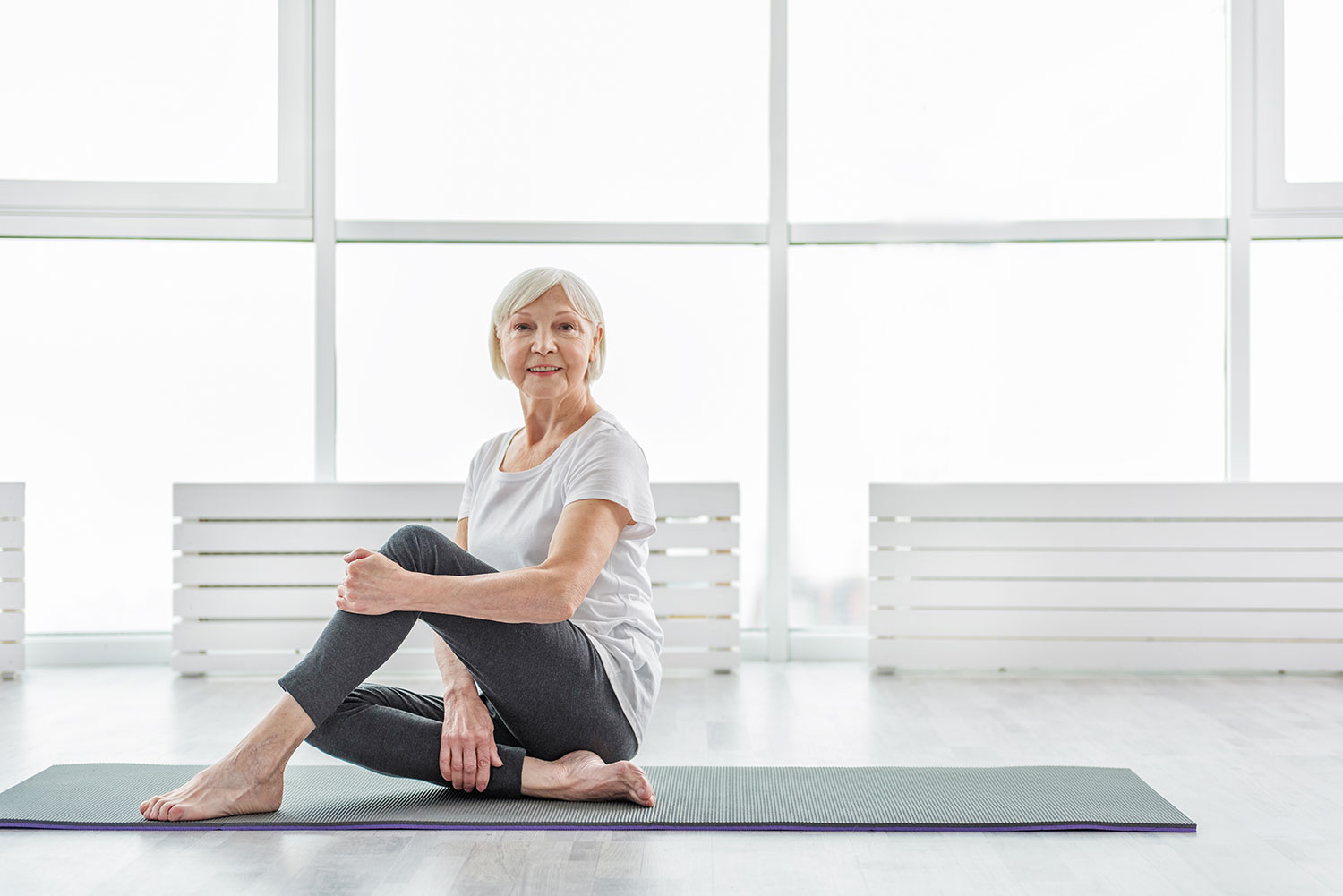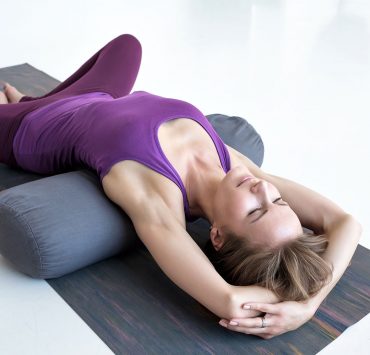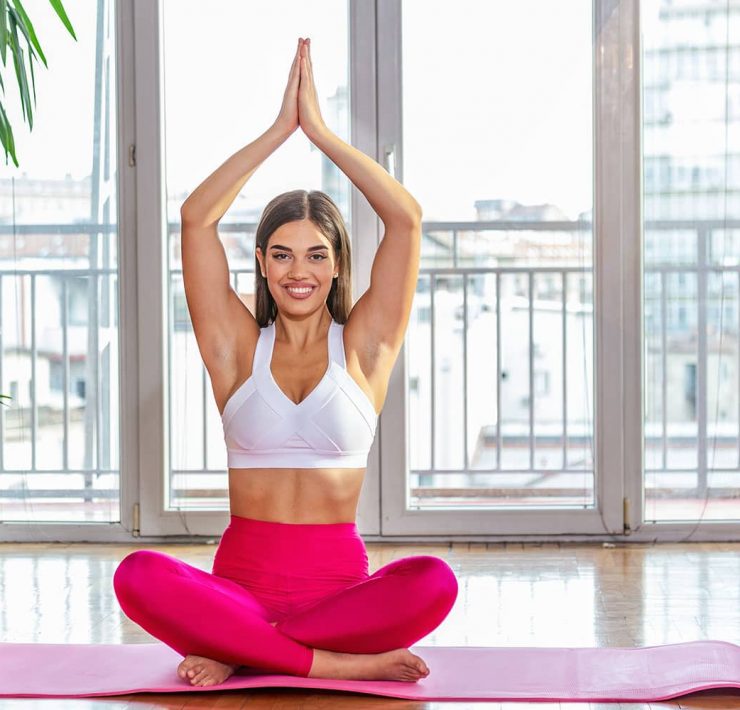
Rose graduated with a degree in Anthropology, which takes her…
Yoga has a benefit for all, but there is no group that it may help more than for seniors. Because of the simultaneous emotional, spiritual, and physical changes seniors go through, they can benefit from all aspects of yoga. Yoga is recommended by medical and health care professionals to support healthy aging, and some insurance plans now even cover yoga classes. There are myriad ways that yoga can benefit seniors, and of course these will vary on an individual basis. A few of them are discussed below.
Why Do Seniors in Particular Benefit From Yoga?

There are many reasons that seniors in particular benefit from yoga. Most seniors find themselves facing new and challenging health issues as their bodies have changed over time. Seniors are at higher risk for certain health conditions, such as osteoporosis or loss of muscle tone. Furthermore, there are many social and environmental changes that seniors face. Loss of independence, changing cognitive abilities, retirement and changing roles, and grief from losing spouses or loved ones can all impact wellbeing. Yoga is unique because unlike a purely physical exercise routine, it can help in all of these various changing dimensions of a senior’s life.
Lower Blood Pressure

Many seniors experience hypertension, or raised blood pressure. For some, this is a natural part of aging. For others, this may be brought on as a side effect of medication, or from the increased stress of aging. There are many risks to hypertension. Foremost, it puts seniors in danger of both stroke and heart attacks, both leading causes of death among older people. It is essential to lower blood pressure among seniors. Yoga is a proven way to lower blood pressure, supported by numerous high quality medical studies. This is due to both the relaxing qualities and philosophy, as well as specific poses such as inversions that can lower blood pressure.
Social Experience

Attending yoga classes can be an incredibly uplifting and social experience for older adults. Yoga classes and studios create community, can promote friendships, connection, and more. Just the routine of going to a yoga class and being surrounded by like-minded others can promote wellbeing. This is especially important for seniors, who are more at risk of being socially isolated. As people age, their social networks shift and decline, alongside the loss of certain roles during retirement, or due to friends passing away or moving. During this time it is important to maintain a socially supportive environment, and yoga is an ideal way to do this.
Relieve Chronic Pain

Chronic pain can inhibit every aspect of life for seniors, from the ability to complete daily tasks, to overall outlook on life. As a person ages, they are at increased likelihood to experience chronic pain. Many seniors take chronic pain as a ‘fact of life,’ and are told to ‘grin and bear it.’ However, chronic pain can be eased, reduced, and even completely alleviated for some with yoga. Comprehensive studies have proven that yoga can benefit practitioners by relieving chronic pain through reducing perception of pain, improving mood, and more.
Increase Range of Motion

Flexibility and range of motion decrease as a person ages. This is due to many factors, such as previous injury, arthritis, hospitalization or immobilization, lack of use or atrophy, and more. It is essential to maintain range of motion in order for seniors to stay independent. An operable range of motion is necessary to perform many tasks, such as washing oneself, getting in and out of bed, reaching for cupboards, driving, and more. Yoga increases range of motion through Asanas, offering many different adaptations for varying levels. As a practice it supports and increases range of motion, and one study even proved yoga was more effective at this than static stretching.
Improves Balance

The number one leading causes of death and injury among seniors is falls. This is a huge risk that all seniors face, but it can be prevented. One reason seniors are more likely to fall is due to changing visual perception and loss of balance. Balance is controlled by both the musculoskeletal system and the vestibular system, two systems that yoga can support. Yoga is an effective intervention to promote and improve balance among seniors. Specific poses can also be incorporated into practice for older adults to improve their balance.
Improve Muscle Tone and Strength

Similar to range of motion, seniors lose muscle tone and strength more quickly than other age groups. A certain level of strength is necessary to perform daily tasks and maintain independence. Yoga is commonly considered as requiring flexibility, or having ‘pretzel-poses.’ However, yoga can build strength just as well as increase flexibility. This is because most asanas require strength to lift the body weight. Even simple sequences such as the sun salutations can be extremely challenging for seniors, however there are many alternative poses to promote and improve strength.
Lowers Anxiety

Older adults are more likely to experience anxiety. There are physiological, social, and environmental reasons behind this. Seniors may be stressed about their health or their partner’s health. They may also struggle with costly medical bills, or maintaining their finances after retirement. Furthermore, changing physical and cognitive abilities can be incredibly stressful and lead to anxiety. They may not want to burden their children, and feel anxiety about ‘role reversal,’ which is very common among older people. Yoga is an ideal solution and has been proven successful in all age groups to reduce anxiety. This is through both the physiological process of matching breath to body movement, as well as the philosophical teachings such as the Yamas and Niyamas.
Improves Cognitive Functions

Older adults will likely experience changing cognitive abilities. For some, a slight alteration in cognitive ability is a natural part of aging. Many seniors also take multiple medications, which can also affect cognitive functions. Seniors are at increased risk of UTI’s, which cause confusion. Furthermore, diseases common among older adults such as Dementia, Parkinson’s, and Stroke all affect cognitive ability. While yoga may not be able to reverse the damage of Dementia or a Stroke, it can still improve cognitive functions to an extent. Yoga is proven to increase focus and concentration. It can also improve memory among some populations. For any senior struggling with changing cognitive functions, yoga may not be the ‘cure,’ however it is likely to offer relief.
Improves Digestion

Due to medications, changing diet, and decreased physical activity, seniors are at risk of chronic constipation, as well as other digestive ailments. Yoga is shown to improve digestion and detoxification pathways. There are many yoga poses targeted for digestion, detailed in B.K.S. Iyengar’s Light on Yoga. In particular, twists and inversions will promote health digestion. Certain Pranyama will also help cleanse and spur digestion.
Barriers for Older People and Yoga

If yoga is so beneficial to older adults, why aren’t more of them practicing it? There are many barriers that prevent older adults from engaging in yoga. First of all, many seniors have a different perception of yoga than younger generations. It is only within the last few decades that yoga has been popular in Western culture. For seniors, they may not have been exposed to yoga, or they may have preconceptions about yoga being ‘woo-woo.’ Similarly, many yoga studios and classes are geared toward younger generations. Teachers and ‘yoga celebrities’ tend to market themselves toward young to middle-aged people. When seniors look in yoga magazines (if they even do), they are less likely to see photos of people who look like themselves practicing yoga.
There is no age to yoga. You can start at 70, 80, because if it’s done with gravity, with breath, you receive and you don’t go against, and you will never damage the body. The first thing is not to fight yourself. Be ready to receive energy. Energy helps, breathing helps. There is no age. Vanda Scaravelli
Furthermore, seniors face more barriers to getting out into the community. Due to physical disability or cognitive challenges, seniors may not be able to travel to their closest yoga studio. Similarly, they may not be as familiar with the online videos and tutorials that are popular for home practices. All of these factors and more combine to create barriers to seniors engaging in yoga.
How to Engage Elder Adults in Yoga

For each barrier, however, there are many solutions to promoting yoga for older adults. For example, more classes could be taught at senior centers. Yoga teachers could provide outreach classes to assisted living facilities and nursing homes, where seniors are not able to leave of their own volition. These classes should also be specifically geared toward older adults. There are many ways to do this, such as offering chair yoga to be inclusive of those in wheelchairs. More adaptations could be given, to accommodate varying physical abilities. Yoga classes could be geared toward joint pain or other issues that older adults face. Yoga teachers could go through training on how to communicate with those living with Dementia, Parkinson’s, or Stroke. And finally, yoga classes solely for seniors could be offered, as a way to create a space for solidarity and welcoming.
Conclusion
There are clearly numerous that older adults can benefit from yoga. However, there are many barriers as well. With proper acknowledgement of the social, environmental, physical, and spiritual factors, more seniors could engage and benefit from the life changing qualities of a yoga practice.
What's Your Reaction?
Rose graduated with a degree in Anthropology, which takes her understanding of basic human needs to a whole new level. Her intelligence and passion for healthy living is reflected in her written work.













